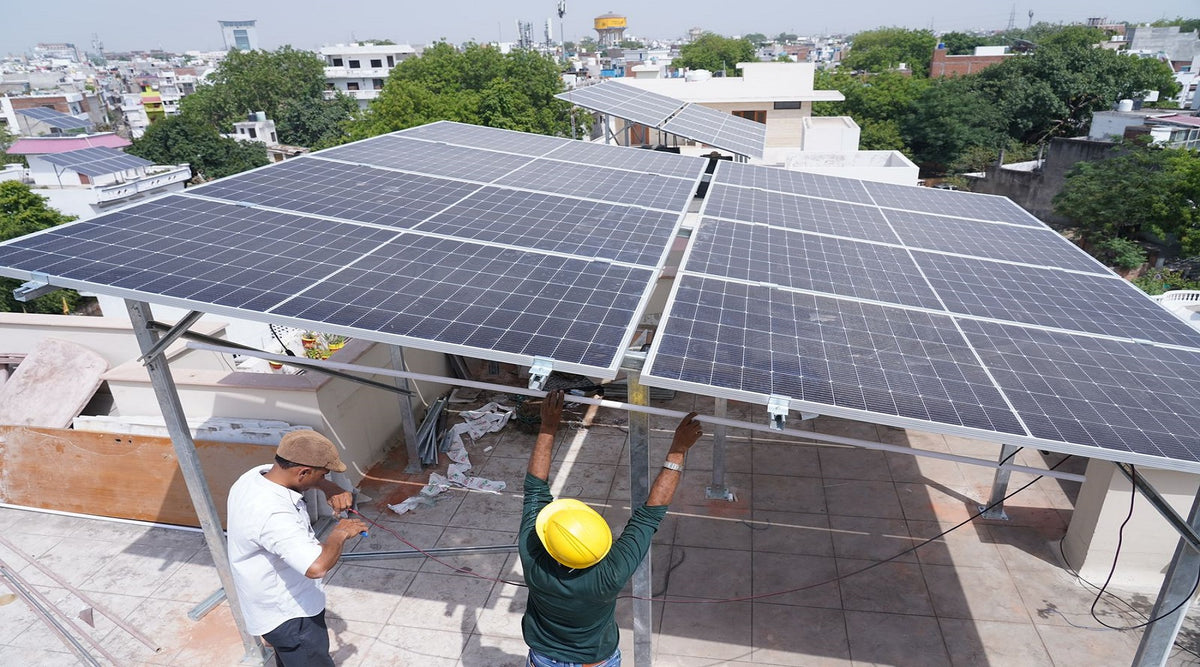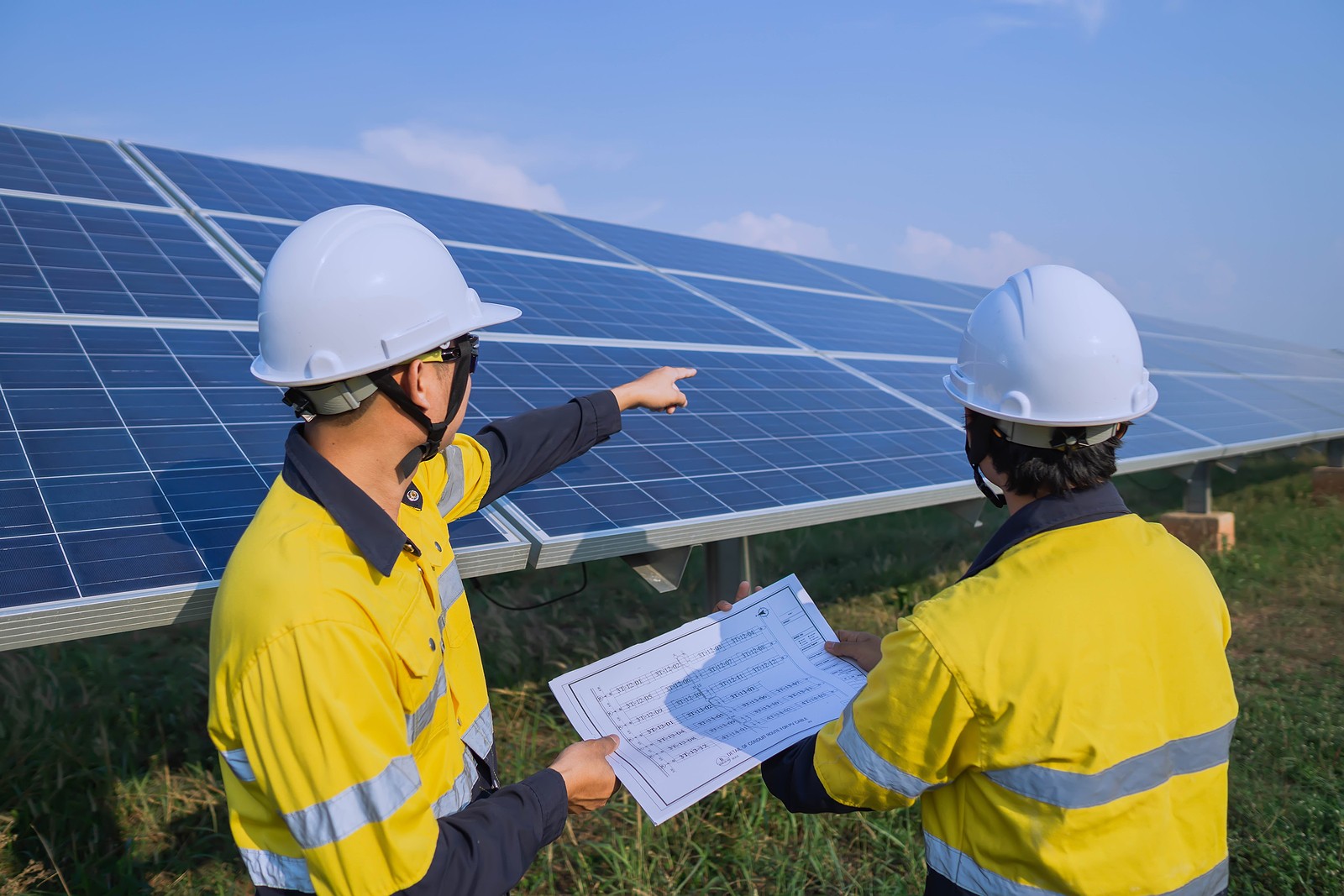Best Home Solar Installation: Professional Setup Of Photovoltaic Systems Can Considerably Minimize Your Energy Costs
Website Assessment and Preparation
Revealing the Land: Where Solar Dreams Begin
Before the sun's energy can be harnessed, a meticulous website assessment should unfold. Envision walking onto your home and wondering, "Is this spot truly the golden ticket for photovoltaic panels?" This is where science satisfies instinct. Examining the land involves more than just checking for sunshine; it's about understanding how the environment will dance with your system throughout the year.
Secret Consider Site Evaluation
- Sunlight Exposure: Are shadows from trees, structures, or chimneys prowling where you plan to install? Even a small shadow can whisper away precious watts.
- Roof Orientation and Tilt: South-facing roofing systems typically take the program, but east or west can still play their part perfectly. The angle of your panels can change early morning chills into afternoon warmth.
- Structural Integrity: Is your roofing a fortress ready to support photovoltaic panels, or does it need some strengthening? This step is crucial to prevent surprises after installation.
- Area Availability: Often, the very best spot isn't on the roofing system at all. Ground-mounted systems use flexibility however require a various kind of groundwork.
Preparing the Canvas: Website Readiness
When the ideal location is determined, preparation starts. Think about it as setting the stage for a grand efficiency. The roofing may need repairs, or trees might need a mild trim. Cleaning debris and guaranteeing the surface is clean are little however considerable steps that pave the method for optimum panel placement.
Actions to Prepare Your Website
- Conduct a detailed shading analysis using specialized tools or apps.
- Check and reinforce the roofing structure, if necessary.
- Clear obstacles that may obstruct sunlight, including thick branches.
- Plan wiring paths and inverter positioning to make the most of performance and security.
- Acquire any required consents or approvals for structural modifications.
Why Does This Matter?
Think about the story of a house owner who excitedly set up panels without comprehensive website assessment, just to discover power generation irregular. The perpetrator? A single chimney casting a shadow in the late afternoon, lowering output when energy need peaks. This illustrates a vital reality: the sun is foreseeable, however our surroundings are not. Every subtlety matters.
In the end, the preparation phase is the quiet architect of success. It turns raw capacity into tangible, tidy energy. When pondering solar panel installation, ask yourself: Have I really read my home's solar story? Because because story lies the secret to sustainable power.
Checking out the Ranges of Solar Panels
Ever based on a roofing and wondered why some solar panels shine like black mirrors while others shimmer with a bluish tint? The secret lies in their product structure, which significantly affects effectiveness and setup methods. Three primary types control the market:
- Monocrystalline panels: Crafted from a single crystal structure, these are the champions of efficiency, often boasting rates above 20%. Their uniform black look is sleek but requires precise setup to maximize performance.
- Polycrystalline panels: Made from numerous silicon pieces melted together, they offer a speckled blue look. Somewhat less efficient than monocrystalline however usually more forgiving in setup nuances.
- Thin-film panels: These are flexible, lightweight, and less obtrusive, thanks to their amorphous silicon or other products. Their lower efficiency implies more surface location is required-- a considerable factor to consider when planning rooftop layouts.
Material Matters: Beyond Silicon
Silicon rules supreme, but did you understand that the substrate and encapsulants can make or break the panel's durability? Glass with high transmittance, resilient polymers, and advanced anti-reflective coverings are subtle heroes. For circumstances, an improperly picked encapsulant can trigger early yellowing, sapping energy output with time. It's a peaceful fight of materials that many installers ignore up until efficiency dips.
Setup Insights: What the Pros Know
When installing panels, the weight difference in between types matters. Thin-film panels weigh less, relieving tension on older roofings. Nevertheless, their larger size demands more precise wiring and support design. Monocrystalline panels, though heavier, can be spaced tighter, optimizing roof realty. Here's a fast rundown of specialist pointers:
- Verify panel weight and roofing system load capability before choice.
- Consider thermal expansion rates of panel products; inequalities can trigger micro-cracks.
- Pick mounting hardware compatible with the panel's frame material to prevent corrosion.
- Use reflective support products to magnify light capture in shaded spots.
Fun Fact: The Anecdote of the "Blue vs. Black" Dispute
One installer once informed me about a customer who insisted on blue panels simply for aesthetics. Months later, the customer saw a small dip in energy production compared to their next-door neighbor's black monocrystalline setup. This story echoes an axiom: often, what looks good doesn't always perform best. Yet, with the right angle and setup, even polycrystalline can shine.
Setup Process and Methods
Imagine hoisting a panel onto your roofing system for the really first time. The dance between accuracy and perseverance starts here. The solar panel installation process isn't practically bolts and brackets; it's a mindful orchestration of angles, weights, and weather condition considerations. Have you ever considered how a minor misalignment can slash off valuable energy production? That portion of a degree can be the distinction in between a growing system and one that underperforms.
Step-by-Step Setup Insights
- Website Assessment: Before any devices touches your roofing system, the assessment stage involves evaluating roofing system orientation, shading aspects, and structural stability. This action goes beyond the surface area-- literally. Knowing the roof's load capability is important to avoid surprises later.
- Mounting Setup: The choice in between flush installs and adjustable racks depends upon your roofing type and sun direct exposure. Adjustable racks provide a secret weapon-- tweak angles seasonally to record maximum sunshine.
- Panel Positioning: Panels should be spaced and protected to avoid thermal growth concerns and water pooling. Neglecting this can result in distorted panels or leakages, a subtle however pricey oversight.
- Electrical Connections: Circuitry is where numerous setups fail. Utilizing appropriate gauge wires, protected connectors, and waterproof junction boxes makes sure durability and safety. Ever seen a panel system underperform because of loose or corroded connections? It's more common than you might believe.
- System Screening: Performing a thorough efficiency check post-installation can catch concerns before they intensify. Voltage tests, inverter performance, and monitoring software calibration are non-negotiable steps.
Pro Tips for Ideal Setup
- Think about microinverters or power optimizers to reduce shading impacts and maximize output from each panel.
- Incorporate a grounding system diligently to prevent electrical noise and protect against lightning strikes.
- Usage corrosion-resistant mounting hardware, especially in seaside or humid environments, to extend system life expectancy.
- Apply weatherproof sealants at every roofing penetration to avoid future leakages-- a small lapse can result in years of water damage.

The Often-Overlooked Components
Many installers overlook the subtle effect of roofing pitch and seasonal sun angle variations. A flat roofing system setup may benefit from tilted racks angled differently for winter season and summer. This flexibility can increase annual energy yield by approximately 15%. The synergy in between panel spacing and airflow is critical. Panels that are too close together can trap heat, lowering effectiveness-- a nuance that only seasoned installers value.
| Setup Element | Professional Insight | Typical Oversight |
|---|---|---|
| Installing Type | Adjustable racks make it possible for seasonal angle changes. | Utilizing set mounts on flat roofs. |
| Electrical Circuitry | Correct gauge and water resistant ports guarantee durability. | Ignoring waterproofing leads to rust. |
| Panel Spacing | Enough gap allows heat dissipation. | Panels too close cause overheating. |
Precaution and Finest Practices for Solar Panel Setup

Ever attempted stabilizing on a roof while managing sharp-edged photovoltaic panels? It's not precisely a Sunday walk. The most overlooked aspect throughout solar panel installation is the careful attention to security protocols that keep installers alive and well. The dance between weather, electrical energy, and heights demands a near-militant discipline.
Vital Security Gear: Your First Line of Defense
- Non-slip footwear: Slipping on a slick roofing system can turn a routine job into a disaster.
- Harnesses and lanyards: Proper fall arrest systems are non-negotiable.
- Insulated gloves: Safeguard against electric shocks, particularly when dealing with live wires.
- Protective eyeglasses: Shield eyes from UV rays, dust, and flying debris.
- Hard hats: Roofing system work suggests unexpected bumps-- do not undervalue falling objects.
One experienced installer when shared how an easy gust of wind nearly sent out a panel-- and himself-- plummeting. That close call strengthened why double-checking harness connections isn't just treatment; it's survival.
Pre-Installation Preparation: A Plan for Safety
Before stepping on the roofing system, an extensive site evaluation is crucial. Are the shingles fragile? Is the roof pitch precariously steep? These elements dictate the type of safety devices required and the installation approach. Overlooking them invites disaster.
Consider the electrical design too. Solar varieties link to inverters, breakers, and house wiring-- all potential shock hazards if mishandled. Labeling circuits clearly and de-energizing systems when possible reduces threat greatly.
Finest Practices to Avoid Common Threats
- Weather condition check: Avoid setup during rain, snow, or high winds. Wetness integrated with electricity is a recipe for disaster.
- Tool management: Protect tools with lanyards or tool belts. Dropped tools can hurt people listed below or damage panels.
- Two-person rule: Never work alone on rooftops. An extra pair of eyes and hands can be a lifesaver.
- Clear interaction: Develop hand signals or walkie-talkie systems when verbal hints get lost in wind or distance.
- Panel handling method: Always lift panels with knees, not back, to avoid stress and maintain control.
Electrical Security: Beyond the Essentials
Many ignore the intricacy of DC voltage created by panels. Unlike a/c, DC arcs are tougher to snuff out, making arc fault Solar Installation Services defense gadgets essential. Likewise, understanding the circuitry schematic completely before touching anything can prevent electrocution.
| Safety Element | Pro Idea | Why It Matters |
|---|---|---|
| Harness Evaluation | Look for wear before each use | Used harnesses can stop working during a fall |
| Panel Orientation | Plan layout to lessen uncomfortable lifts | Prevents muscle injuries and panel damage |
| Electrical Seclusion | Usage lockout/tagout procedures | Makes sure power is off during electrical wiring |
Does the thought of dealing with high-voltage DC make you pause? It should. Respecting the invisible forces in play and getting ready for them with the ideal security state of mind changes a risky task into a workable one.